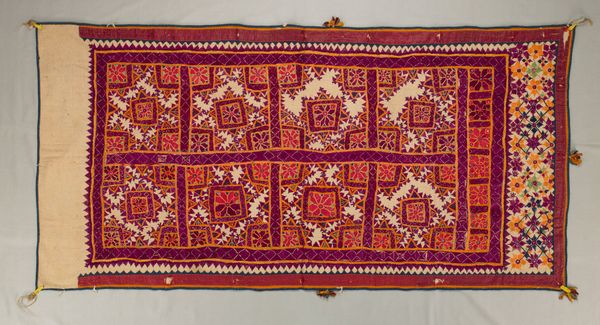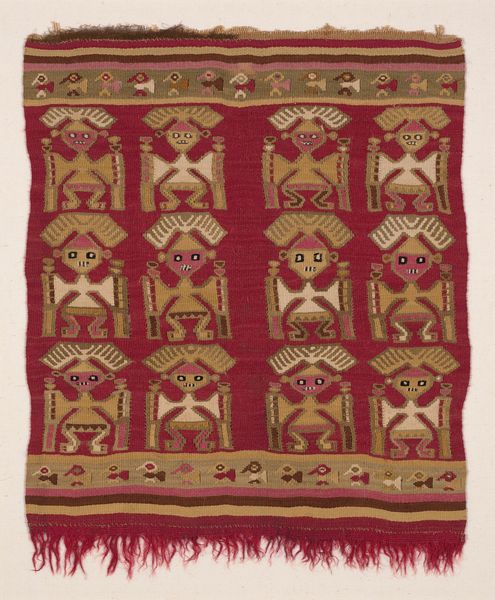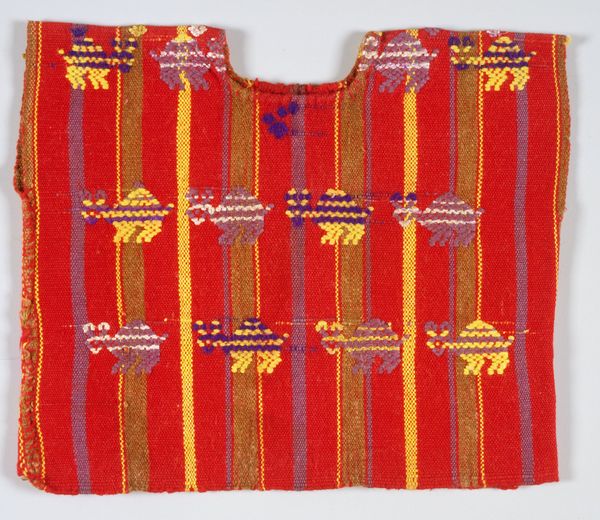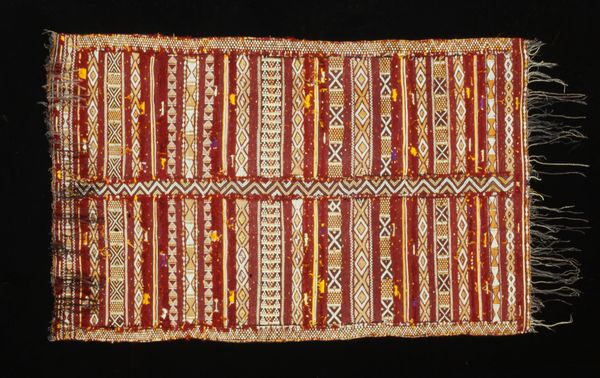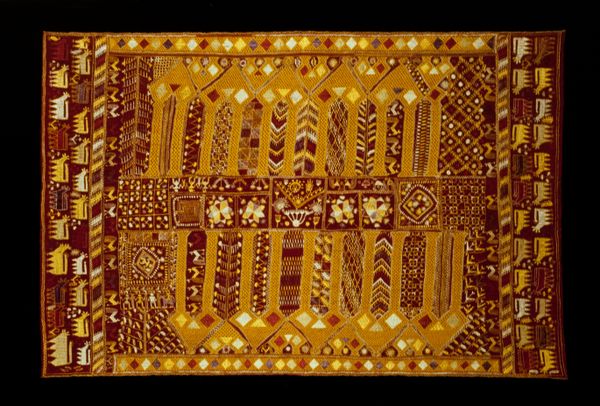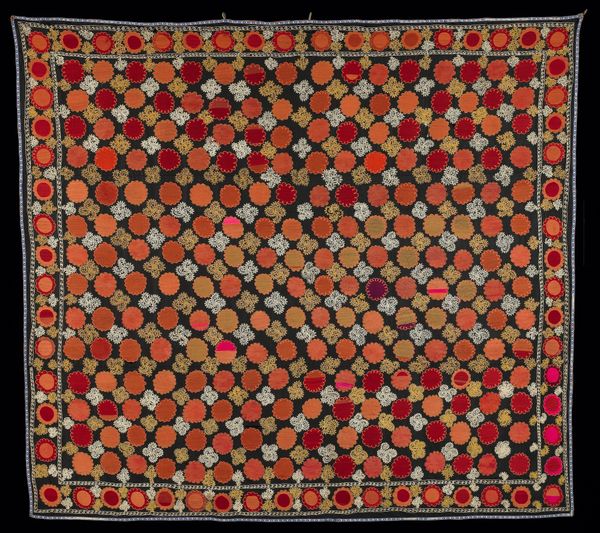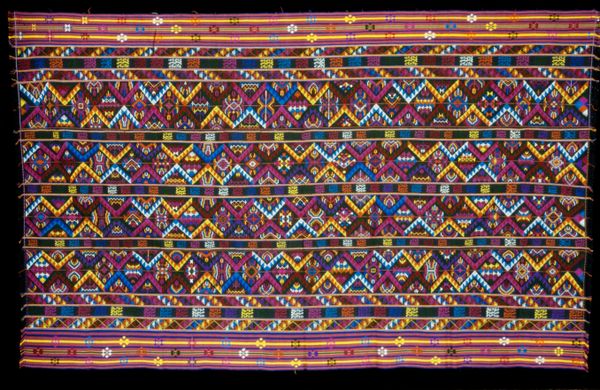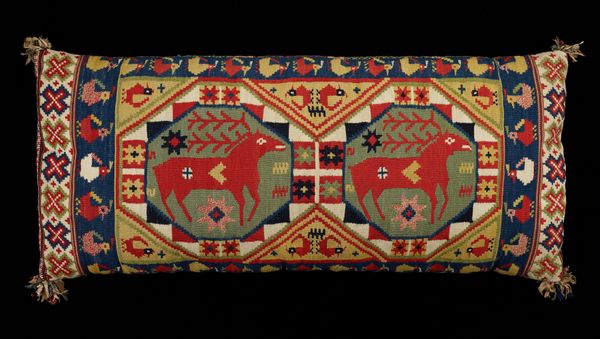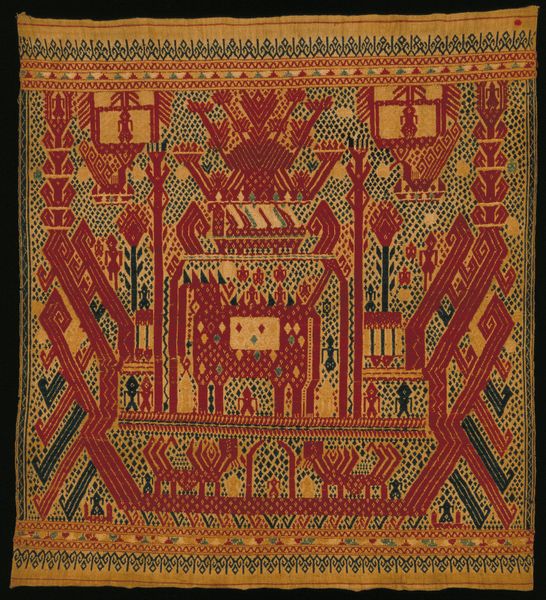
silk, textile, cotton
#
pattern heavy
#
silk
#
textile
#
geometric pattern
#
abstract pattern
#
organic pattern
#
repetition of pattern
#
pattern repetition
#
cotton
#
layered pattern
#
funky pattern
#
combined pattern
#
repetitive pattern
Copyright: Public Domain
This Phulkari was made in undivided Punjab, sometime in the 20th century, by an anonymous artist, using untwisted silk thread on cotton fabric. Phulkari, meaning "flower work," transcends mere decoration; it’s a cultural artifact deeply embedded in the social fabric of Punjab. Historically, these textiles were created by women, for women, marking significant life events. The visual vocabulary, with its geometric patterns and stylized figures, references the region's agrarian roots and communal life. Consider the colours: the vibrant oranges and reds speak to celebration and fertility. But this textile also offers insights into the domestic sphere, the division of labor, and the artistic agency of women within a patriarchal society. Understanding Phulkari requires a multidisciplinary approach. Historical archives, ethnographic studies, and textile analysis can reveal the nuances of its creation, use, and significance within the cultural landscape of Punjab. It reminds us that art is always enmeshed in a web of social relations.
Comments
No comments
Be the first to comment and join the conversation on the ultimate creative platform.
